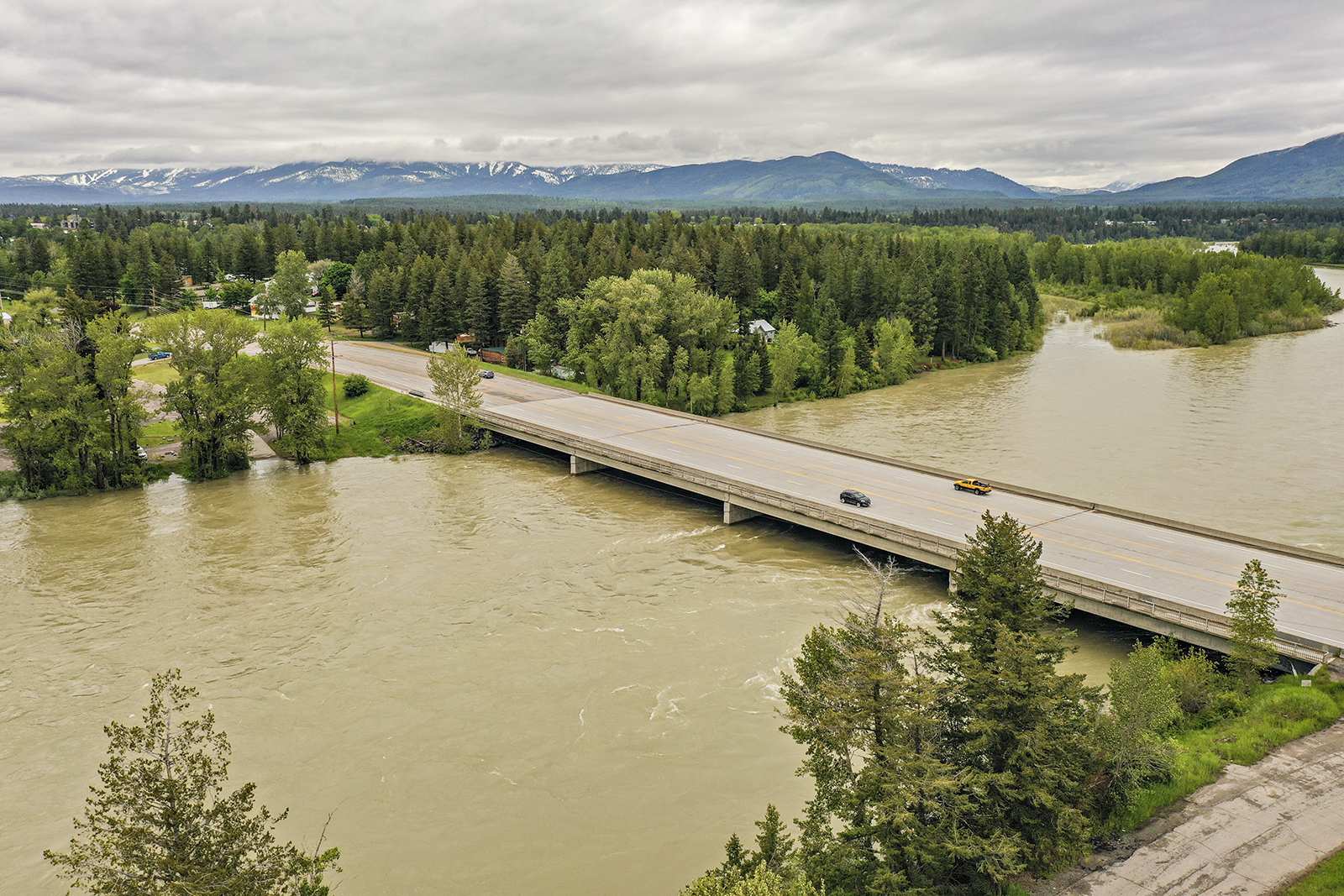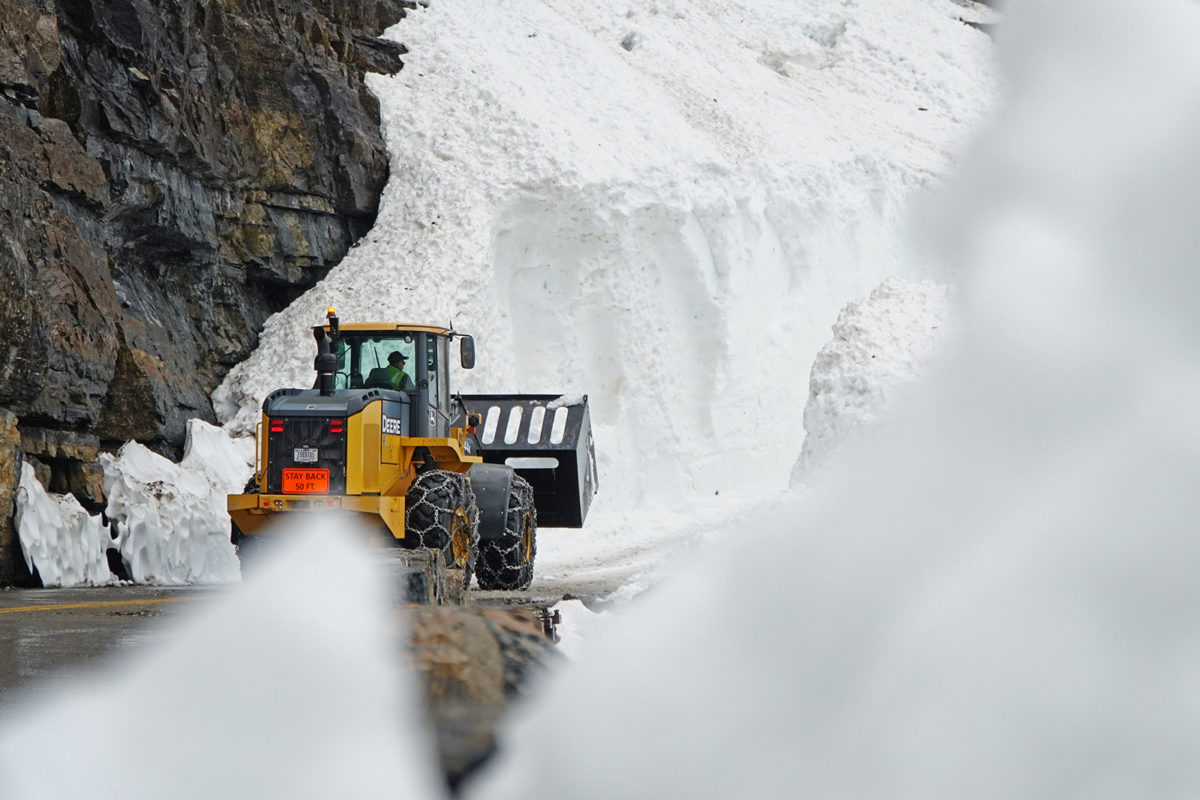Historic Flooding Puts Flathead on High Alert
As communities in southern Montana reel from devastation, including Yellowstone National Park, the Flathead Valley and Glacier have avoided serious consequences despite record rainfall
By TRISTAN SCOTT and MAGGIE DRESSER
From her vantage at park headquarters in West Glacier last week, Gina Kerzman said she “can’t complain” about the record rainfall and flood advisories that have swept through the Flathead Valley over the past week, prompting evacuations of low-lying residential areas and forcing closures at numerous fishing access sites, as well as delivering up to two feet of snow along the alpine stretches of the Going-to-the-Sun Road in Glacier National Park, which plow crews are working to clear for summertime traffic.
“So far, it’s been minor. And I say ‘minor’ because, how can you complain with what’s going on at Yellowstone?” Kerzman, Glacier’s public information officer, said, referring to the catastrophic flooding near the neighboring national park. “Our bridges and roads are holding and any damage that we’ve had has been limited to basement flooding. To my knowledge, there’s no chunks of road missing or anything like that.”
In response to persistent flooding in the Flathead Valley, Gov. Greg Gianforte on June 20 received a public briefing from Incident Command and Flathead County Sheriff Brian Heino at the Old Steel Bridge Fishing Access Site in Kalispell and offered state resource availability if needed.
“I wanted to see this with my own eyes,” Gianforte said. “We’re here to help.”
Heino said the sheriff’s office is working with local and statewide agencies to monitor areas surrounding Flathead Lake, which is reaching full pool and posing potential risk in the Lower Valley and areas near Somers and Lakeside.

“As of yesterday, the weather has shifted and there’s more significant rainfall that’s been added to waterways and streams,” Heino said.
Forecasts predicted that the latest storm would drop a quarter-inch of rain in Kalispell, Heino added, but more than an inch had fallen as of mid-afternoon on Monday, when pre-evacuation notices were in effect on the 700 block of Wagner Lane, all low-lying areas of the Lower Valley area, the south end of River Road and low-lying areas in Evergreen.
The Flathead Valley has not seen flooding on this scale since 1975, Heino said, adding that an emergency shelter at Kalispell Middle School has been established, but no residents have utilized the facility.
Gianforte said flooding no longer poses a public safety threat to the areas most impacted on the Yellowstone River, and Montana National Guard resources are available to send to the Flathead Valley if needed.
Last week’s record-breaking rain and unseasonable snowfall has also presented logistical and economic setbacks as the park and its gateway communities prepare for summer tourism season.
On the west side of the Continental Divide, businesses stretching from Kalispell to Whitefish and Columbia Falls to West Glacier are bracing for a surge in seasonal visitation, and the inclement weather has delayed or dampened some operations from getting underway.
“Obviously, the snow put a big damper on our activities, especially on the opportunity for our guests to mountain bike off the summit,” said Chad Sokol, public relations manager at Whitefish Mountain Resort on Big Mountain, which offers a suite of summertime activities. Many of them, including the Aerial Adventure Park and zip lines, the Strider Bike Park and Spider Monkey Mountain, have reopened, while the Summit House and Base Lodge continued to operate during last week’s extreme weather events.
The Alpine Slide has been beset with intermittent closures, however, while Chair 1 is running for scenic lift rides only, as mountain biking trails from the summit remain closed “a while longer as we wait for all this snow to melt.”
Still, it pales compared to the devastation to Yellowstone National Park and its gateway towns, where record floods pounded bridges and roadways and recovery efforts are expected to stretch for months.
Portions of Yellowstone, including its popular southern loop, were set to reopen on June 22, although restrictions must be in place to manage the visitation. Yellowstone Superintendent Cam Sholly stated in a news release that he was implementing a temporary license plate system to regulate the crowds.
“It is impossible to reopen only one loop in the summer without implementing some type of system to manage visitation,” Sholly stated, noting that the park and its partner stakeholders anticipated record summertime crowds to converge this year for its 150th anniversary.

In Glacier Park, Kerzman said she’s heard rampant speculation about the effect that limited operations in Yellowstone might have on Glacier, which requires vehicle reservations at its most popular entrances.
“Most of it is just speculation at this point but we would encourage all visitors that do have a change of plans to take the time to understand the details regarding the reservation system,” she said. “Right now, the 24-hour advanced reservations are available but all the others are gone.”
The late-season snowfall and subsequent warming temperatures has prompted widespread avalanche activity along the Sun Road corridor, forcing plow crews to dig out avalanche-prone sections of the alpine thoroughfare multiple times.
“Progress has been slow this year,” Kerzman said. “The avalanche hazards have been significant. The plow crews have had to dig out Triple Arches three times. I would say that if the weather starts to cooperate and things start melting out, and the avalanche danger isn’t too high, we could knock it out pretty quickly. But up to this point the progress has been slow.”